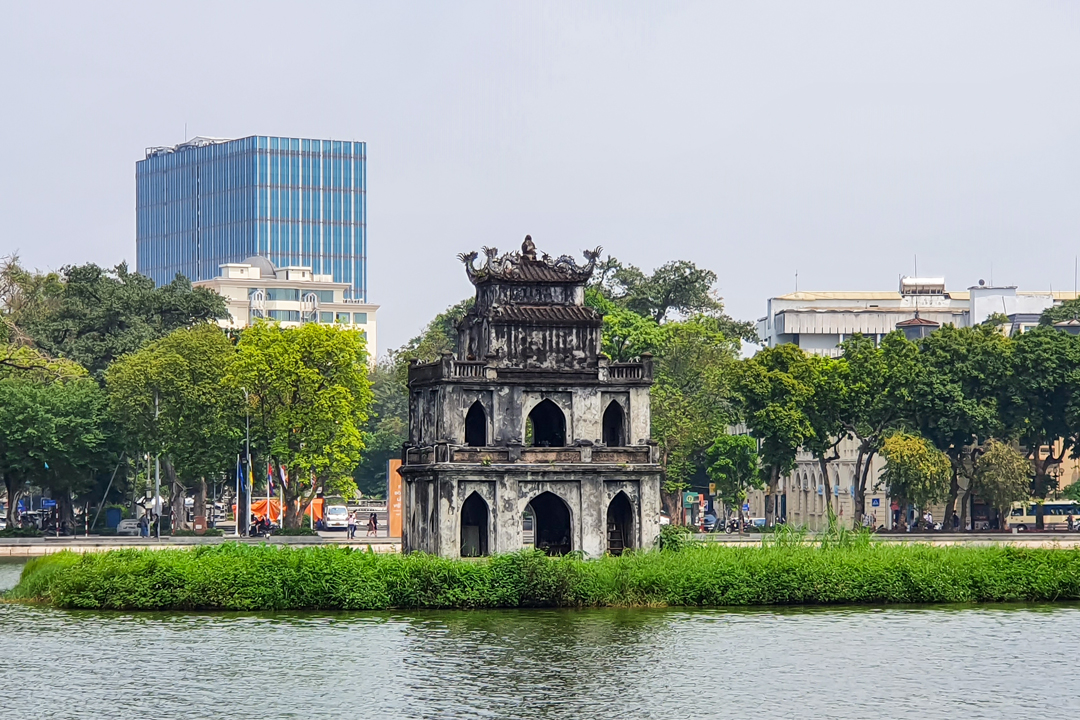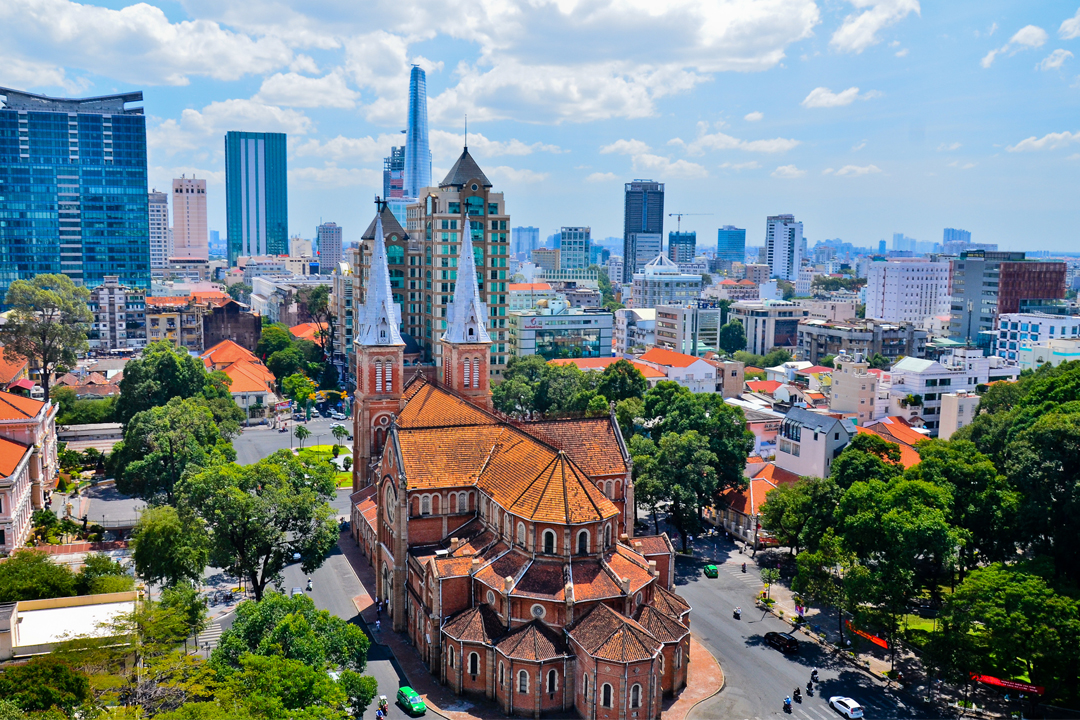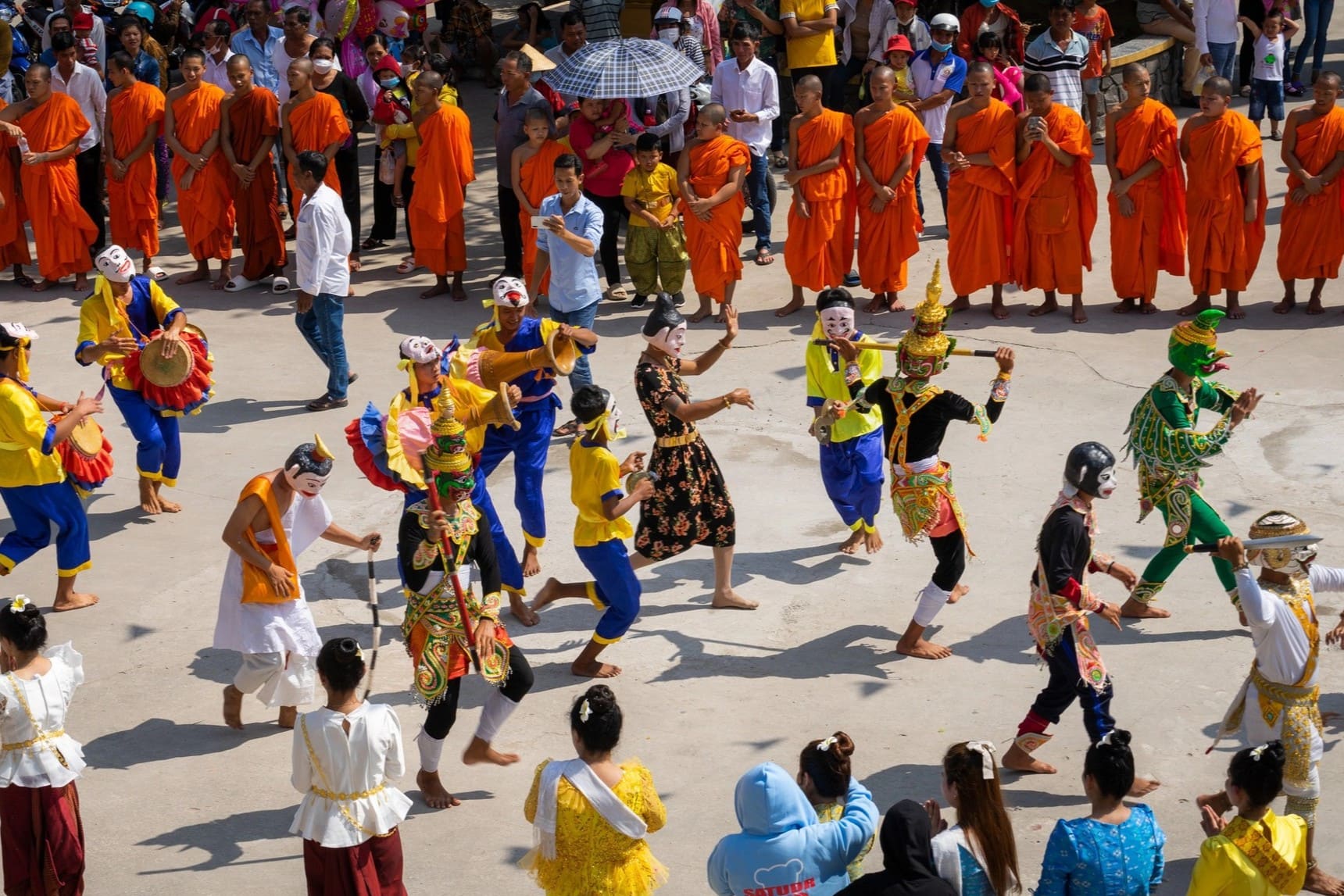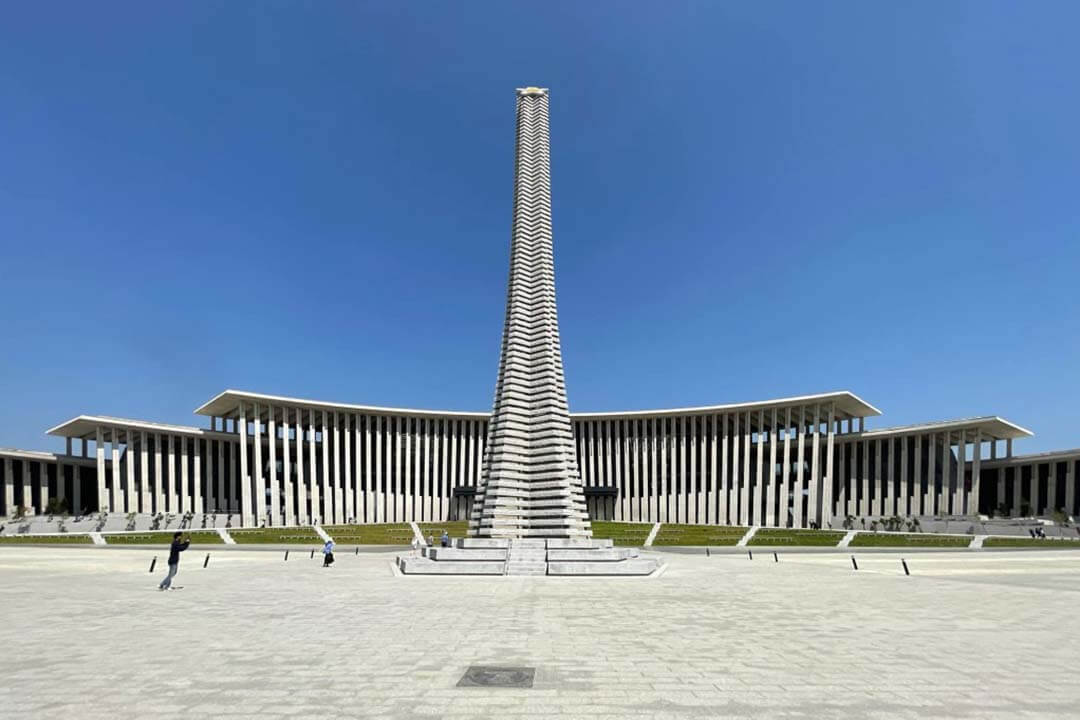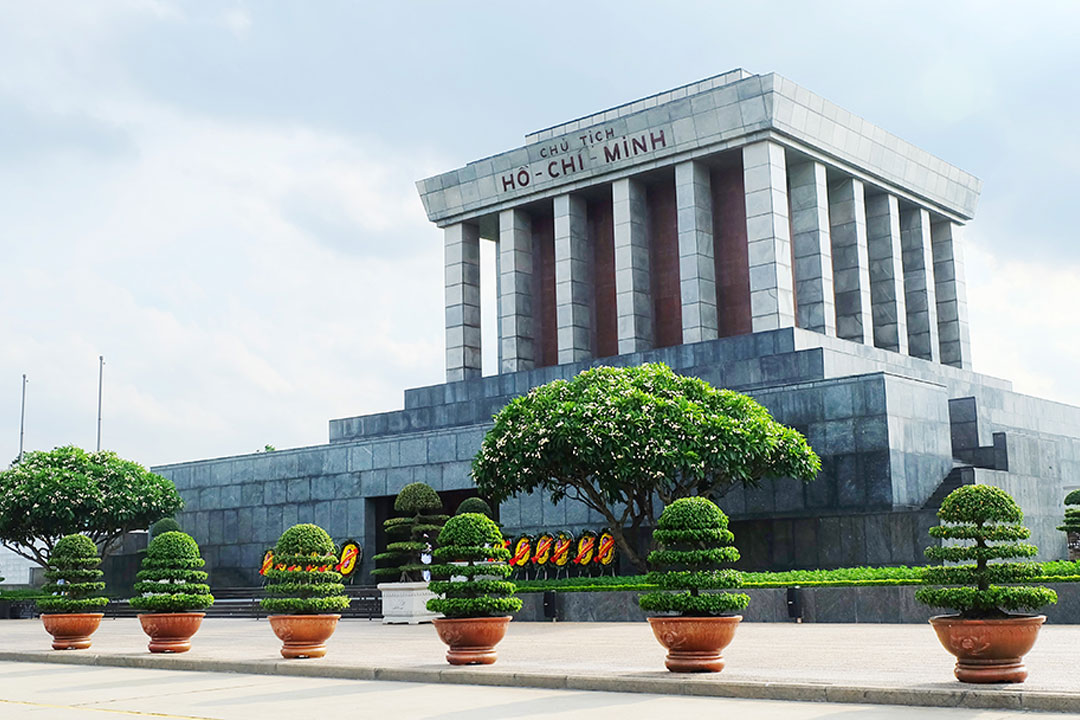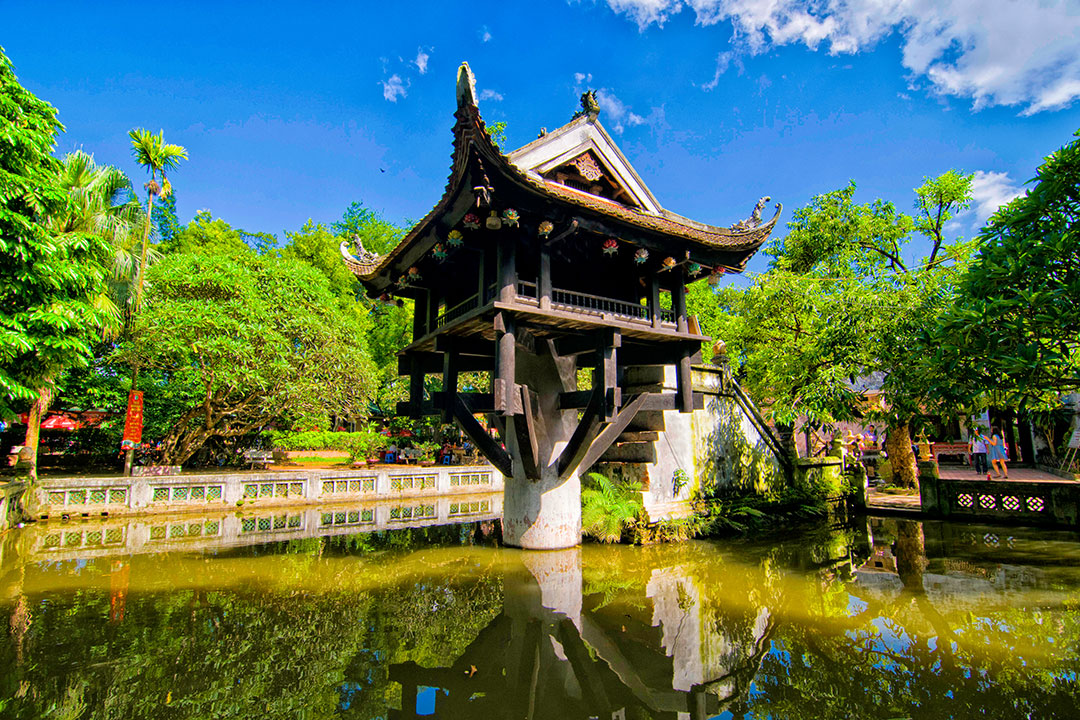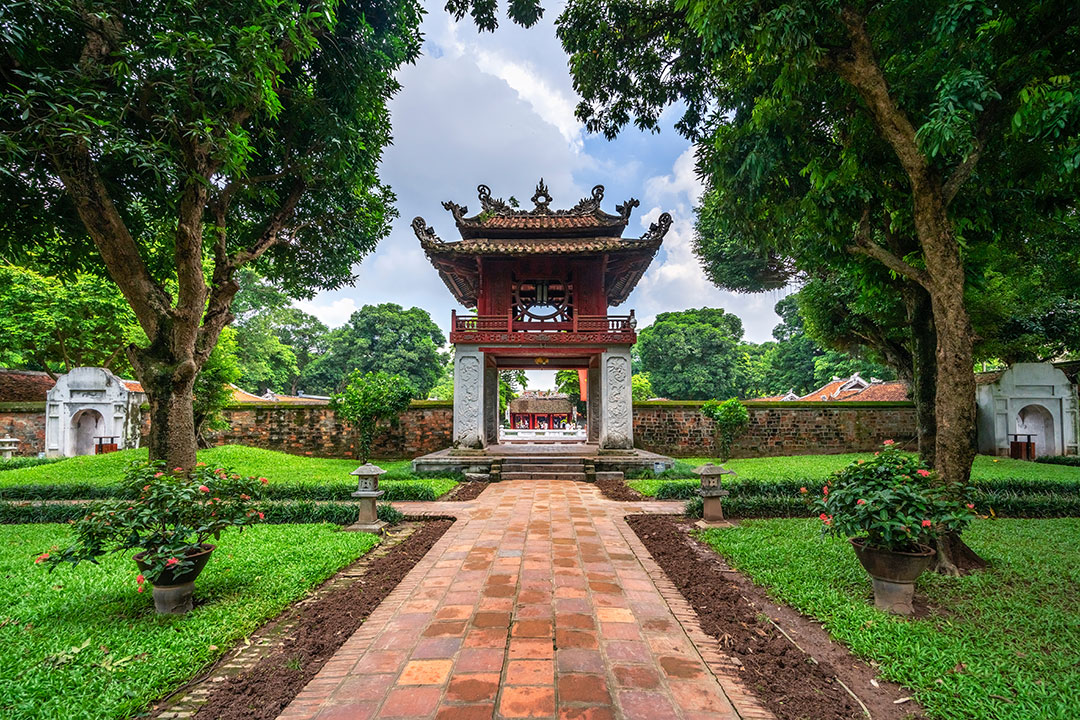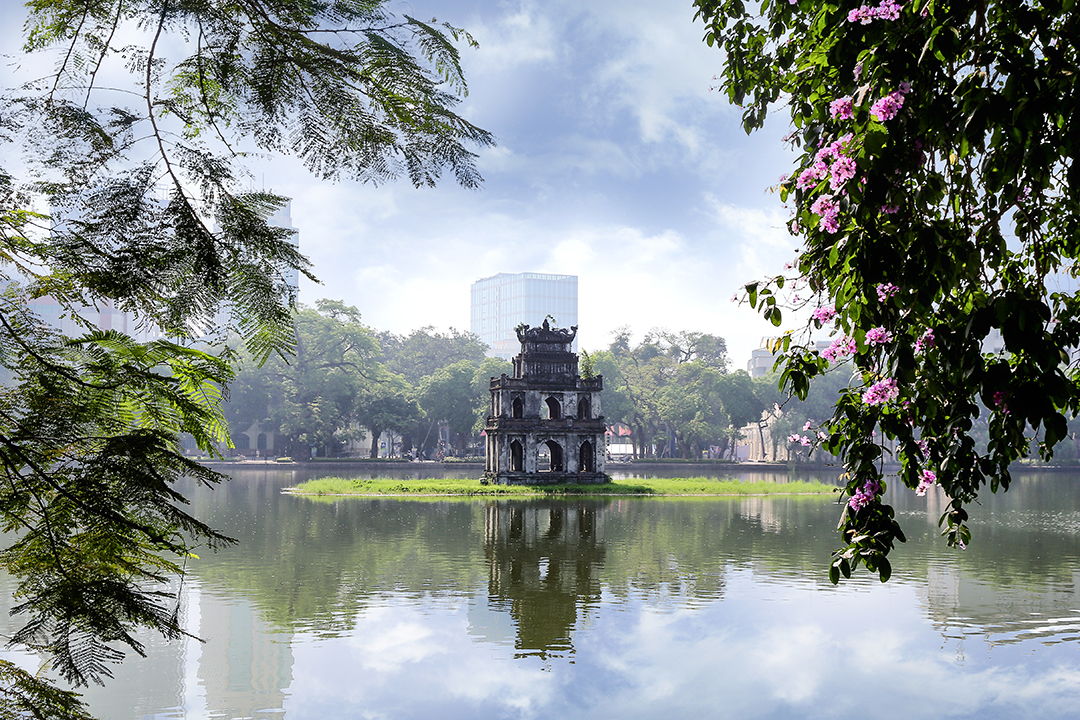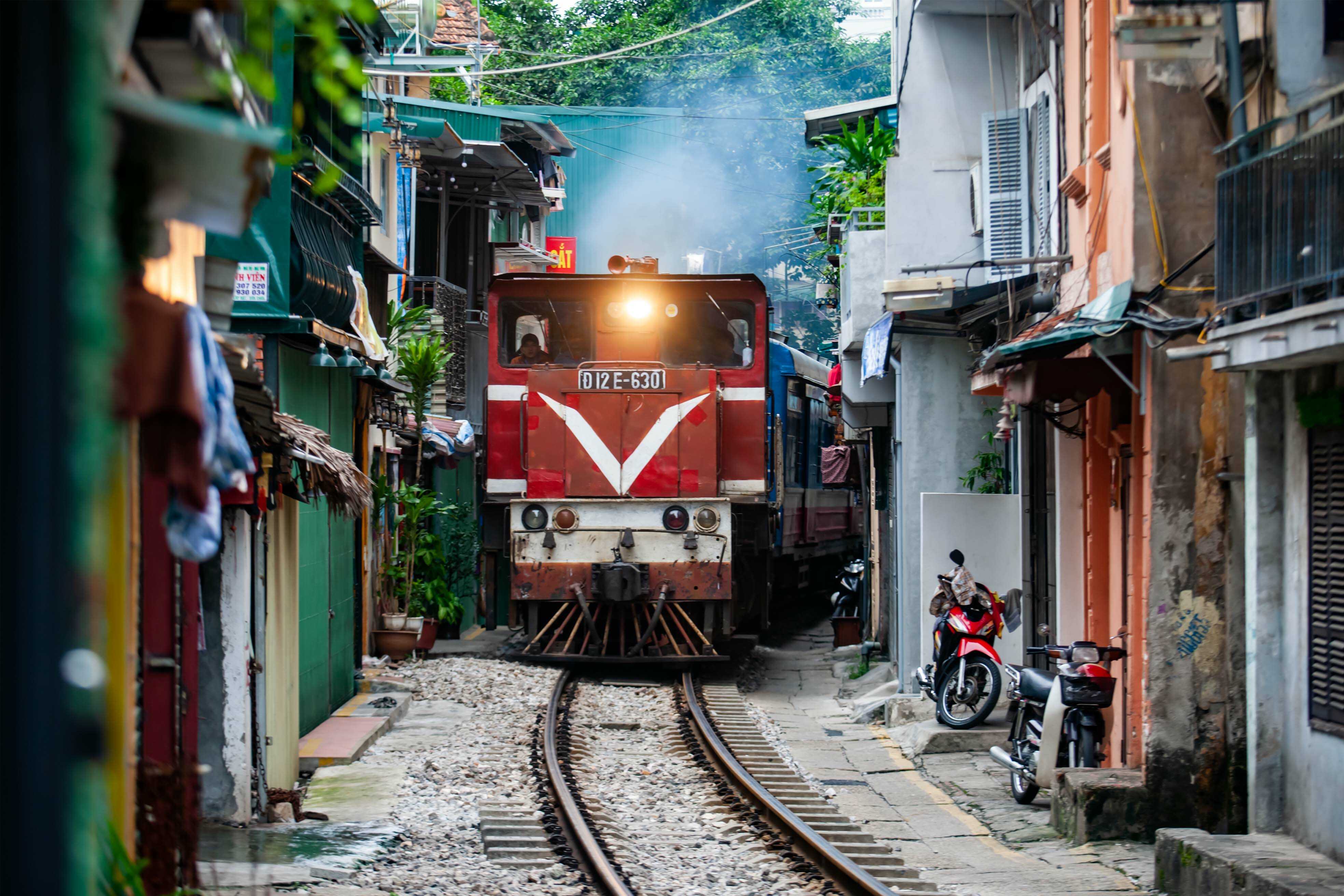Vietnam Military History Museum: Accessibility, Architecture & What To See
Vietnam Military History Museum stands as a testament to both the resilience and strategic prowess that have defined Vietnam throughout centuries of conflict. For those intrigued by tales of valor, strategy, and resilience, this museum offers an unparalleled glimpse into Vietnam’s storied past. For history enthusiasts and curious travelers, this site offers a powerful glimpse into Southeast Asia's rich past. Through meticulously curated exhibits and thought-provoking narratives, you'll uncover how historical events have shaped modern-day Vietnam. Join us at GTrip as we delve into why this museum is not merely an attraction but a vibrant narrative hub where history comes alive.
Where is Vietnam Military History Museum
Location: Thang Long Boulevard, Tay Mo Ward (Thang Long Boulevard, Tay Mo Ward, Nam Tu Liem District, Hanoi)
One of Hanoi’s top cultural landmarks, the Vietnam Military History Museum is a must-visit for history lovers and curious travelers on a Hanoi tour.
Operating hours and entrance fee
The Vietnam Military History Museum maintains a specific operating schedule that visitors should note carefully when planning their trip:
Opening hours:
The Vietnam Military History Museum is open on Tuesdays, Wednesdays, Thursdays, Saturdays, and Sundays during the following hours:
- Morning: 8:00 AM - 11:30 AM
- Afternoon: 1:00 PM - 4:30 PM
- Closed for lunch from 11:30 AM to 1:00 PM. Closed on Mondays and Fridays.
Note: On major holidays such as Victory Day (April 30) or National Day (September 2), the museum may extend its hours or host special events. It's best to check ahead before visiting during holiday periods.
Ticket prices:
- Vietnamese visitors:
- Adults: 20,000 VND
- Children & seniors: 10,000 VND
- Children under 6: Free
- International visitors:
- Standard ticket: 40,000 VND
Tickets are sold at the main entrance. Only cash in Vietnamese Dong (VND) is accepted. No booking is required for individuals, but large groups should contact the museum in advance for better coordination.

The Vietnam Military History Museum is located in Thang Long Boulevard, Nam Tu Liem, Hanoi
Historical significance and foundation
The Vietnam Military History Museum, originally named the Army Museum, emerged during a pivotal period in Vietnam's post-colonial history. Founded in 1956, the museum was established with a clear purpose: to preserve and communicate the military achievements of the Vietnamese people through various historical periods.
The museum was founded to document key victories over French colonial forces, especially the pivotal 1954 triumph at Dien Bien Phu. The museum's founding coincided with a transitional period in Vietnam's history. Preserving military artifacts and documenting resistance strategies became vital to shaping national identity after independence from France.
The museum has undergone multiple expansions and renovations over the decades. Major upgrades took place in 1985 and 2005 to house a growing collection and adopt modern exhibition techniques. Today, it serves as a repository of military artifacts. It also functions as a living educational institution that continues to collect, preserve, and showcase items crucial to Vietnam’s military history.
Modern design and high-tech features of the museum
The Vietnam Military History Museum seamlessly combines modern architecture with historical significance. Spanning over 386,000 square meters, it features expansive exhibition halls, outdoor displays, and multi-functional areas for education, research, and events. Rising 35.8 meters high, the building uses skylights and glass façades to enhance natural lighting while reducing energy use.
The museum features advanced tech like 3D mapping, immersive films, virtual reality, interactive exhibits, and multimedia displays. These elements make military history more accessible, engaging, and memorable.
Sustainability is key, with solar panels, rainwater systems, and tailored climate controls protecting both the environment and artifacts. Underground, the museum houses conservation labs, digital archives, and a high-tech security center.
Accessibility is prioritized with tactile guides, braille signage, ramps, and multilingual audio guides. Built with eco-friendly materials like recycled steel and certified timber, the museum is both a cultural landmark and a model of innovation.
Collection overview and exhibition philosophy
The museum's vast collection of over 150,000 artifacts represents one of Southeast Asia's most comprehensive military archives. These collections span multiple historical periods and include diverse categories of items:
| Historical period | Key collection categories | Notable examples |
|---|---|---|
| Ancient Dynasties (939-1858) | Traditional weapons, battle maps, royal decrees | Bronze drums, crossbows, imperial military seals |
| Colonial Resistance (1858-1945) | Anti-French resistance weapons, underground communication tools | Homemade explosives, resistance newspapers, guerrilla manuals |
| First Indochina War (1946-1954) | Vietnamese and French military equipment, battle documentation | Dien Bien Phu dioramas, captured French weapons |
| Vietnam War/American War (1955-1975) | Air defense systems, guerrilla tactics exhibits, captured US equipment | MiG fighter planes, tanks, artillery pieces |
| Modern Military (1975-present) | Contemporary military technology, peacekeeping operations | Modern communications equipment, humanitarian mission documentation |
Iconic outdoor exhibits
Among the museum's most striking features are its outdoor displays, which showcase larger military equipment in an open-air setting. These exhibits create an immediate visual impact and provide context for understanding the scale and technological aspects of modern warfare.
The outdoor collection includes:
- Aircraft Gallery - Features both Vietnamese and captured enemy aircraft including:
- Soviet-supplied MiG-21 fighter jets used during the American War
- Fragments of downed American B-52 bombers
- French fighter planes captured during the First Indochina War
- Reconnaissance and transport helicopters
- Heavy Artillery Collection - Displays field artillery pieces including:
- Soviet-made 130mm field guns that provided long-range firepower
- Anti-aircraft batteries used to defend Hanoi during bombing campaigns
- Captured American howitzers and naval guns
- French artillery pieces from the Dien Bien Phu battle
- Armored Vehicle Display - Showcases tanks and armored personnel carriers:
- Soviet-supplied T-54 tanks that participated in the 1975 offensive
- Captured M48 Patton tanks and M113 armored personnel carriers
- Self-modified Vietnamese armored vehicles
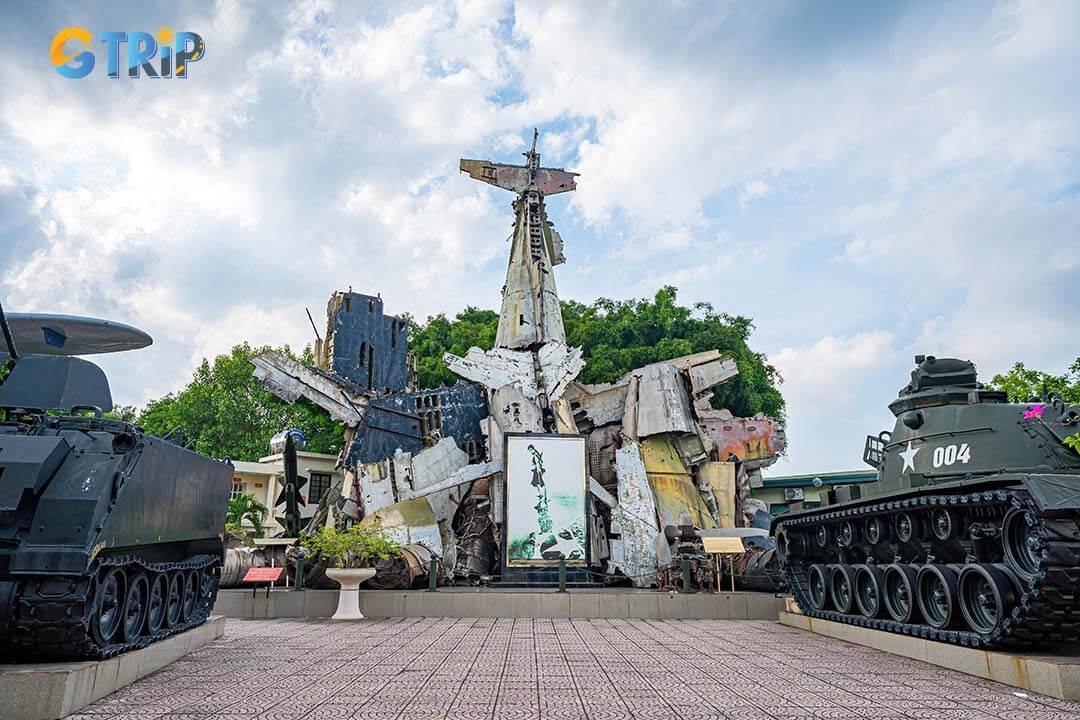
The museum’s outdoor exhibits offer an impressive display of military aircraft, artillery, and armored vehicles
These outdoor exhibits allow visitors to examine actual equipment used in combat, providing a tangible connection to historical events that shaped Vietnam's history. Informational plaques accompany each piece, explaining its origin, technical specifications, and historical significance in specific military campaigns.
How to accessibility of the Vietnam Military History Museum
Conveniently located in Nam Tu Liem District, it’s easy to reach for both locals and tourists. This quick guide covers how to get there, opening hours, ticket prices, and useful tips.
Museum geographic position
The museum complex occupies several hectares of land, making it visible from a distance and easily identifiable within the Nam Tu Liem District. The location was chosen to showcase large outdoor military displays and spacious indoor exhibits. Surrounded by wide avenues and open areas, it’s a fitting setting for Vietnam’s military history museum.
Public transportation options
Reaching the Vietnam Military History Museum via Hanoi's public transportation system is straightforward and economical. The city's expanding bus network offers multiple routes serving the museum area:
Bus routes serving the museum:
| Route number | Path | Frequency |
|---|---|---|
| 71B | My Dinh - Xuan Mai Bus Station | Every 15-20 minutes |
| 74 | My Dinh Bus Station - Xuan Khanh | Every 15-20 minutes |
| 87 | My Dinh - Quoc Oai - Xuan Mai | Every 20-25 minutes |
| 88 | My Dinh - Hoa Lac - Xuan Mai | Every 20 minutes |
| 107 | Kim Ma - Village of Vietnamese Ethnic Culture | Every 15 minutes |
| 157 | My Dinh Bus Station - Son Tay Bus Station | Every 20 minutes |
| E05 | Long Bien - Smart City urban area | Every 25 minutes |
| E07 | Long Bien - Smart City urban area | Every 25 minutes |
| E09 | Ho Tay Water Park - Smart City urban area | Every 25 minutes |
Alternative transportation methods
Beyond public buses, visitors can access the museum through several other transportation options:
- Taxi and ride-sharing Services:
- Grab, Be, and traditional taxi companies operate throughout Hanoi
- Approximate fare from Old Quarter: 150,000-200,000 VND ($6-9)
- Travel time from city center: 25-40 minutes, depending on traffic
- Advantage: Door-to-door service with air conditioning
- Motorbike rental:
- Rental cost: 100,000-150,000 VND per day ($4-7)
- Requires international driving permit for legal operation
- Provides flexibility to explore surrounding areas
- Best for experienced riders comfortable with Hanoi traffic
What to see in Vietnam Military History Museum
The museum features over 150,000 artifacts highlighting Vietnam’s military history, especially the First Indochina and Vietnam Wars. Modern technology enhances traditional displays, offering an immersive experience. You can use multilingual audio guides (English, French, Chinese, Japanese, Korean) or join guided tours often led by veterans.
National treasures and artifacts
The museum’s outdoor area features notable exhibits, including the MiG-21 fighter jet, credited with four aerial victories against American aircraft during the Vietnam War. Another highlight is the T54B tank that crashed through the gates of Saigon's Independence Palace in 1975, marking the war’s end. The original Ho Chi Minh Campaign Map, used in planning the final offensive, is also on display. Many of the artifacts, once classified, were declassified after Vietnam-U.S. diplomatic normalization, offering new insights into both sides of the conflict. The museum employs advanced conservation techniques to protect its artifacts, including climate-controlled cases and UV-filtered lighting.
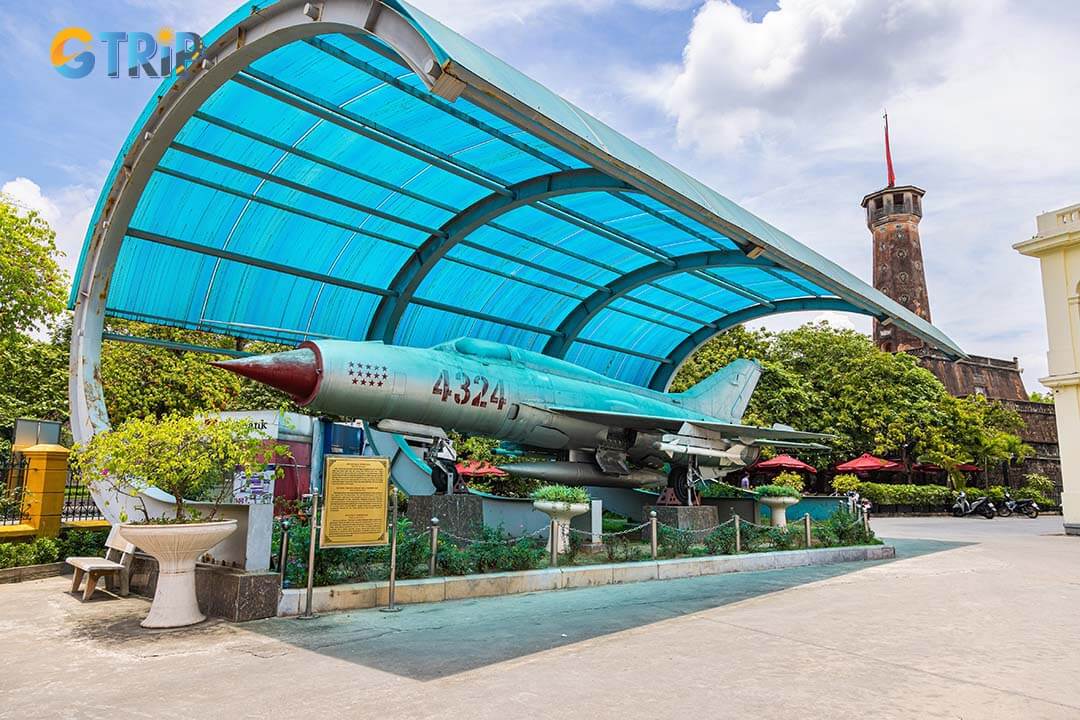
The outdoor area showcases iconic relics like the MiG-21 and T54B tank, along with rare declassified artifacts and well-preserved pieces
Interactive displays and advanced technology
The Vietnam Military History Museum has integrated modern technologies such as virtual reality (VR), 3D scanning, and interactive screens to offer visitors an immersive historical experience. VR stations recreate significant events like the Battle of Dien Bien Phu or the Tet Offensive, allowing viewers to feel the intensity of the battlefield.
3D digitization technology is also used to preserve and present rare artifacts in the form of interactive models, enabling visitors to observe details from multiple angles. Additionally, an augmented reality (AR) app on smartphones connects physical artifacts with film and media, creating a multi-dimensional, dynamic experience. The museum also focuses on accessibility features for people with disabilities, ensuring that all visitors can conveniently access and explore the history fully and comfortably.
Admire six thematic exhibits
The Vietnam Military History Museum is a tribute to the country's military legacy, featuring six thematic exhibits that explore the evolution of Vietnam's military history. Each section is carefully curated to provide both educational insight and immersive experiences for visitors. Below is a brief overview of each of the six thematic exhibits:
1. The early days of nation-building and defense
This section takes visitors back to the dawn of Vietnam's civilization, focusing on the legendary Hung Kings and the establishment of Van Lang, Vietnam's first nation-state. It showcases important artifacts, such as Dong Son bronze drums, which provide insights into early Vietnamese society and its military organization. Artifacts related to the 938 CE Battle of Bach Dang, where General Ngo Quyen defeated the Southern Han forces, highlight early military ingenuity. Explore the evolution of weapons and defense strategies from the Dong Son and Au Lac periods, highlighting Vietnam's early steps toward self-defense.
2. Defending independence from 939 to 1858
This section highlights nearly a thousand years of Vietnamese resistance, focusing on military strategies and innovations that preserved sovereignty. Key exhibits include weapons and armor from various dynasties, including the Tran Dynasty's resistance against Mongol invasions in the 13th century. The exhibit highlights General Tran Hung Dao's naval tactics at the Battle of Bach Dang River, featuring models of stake traps used to sink Mongol ships. The section also explores the evolution of Vietnamese military technology, from basic weapons to more advanced tactics.
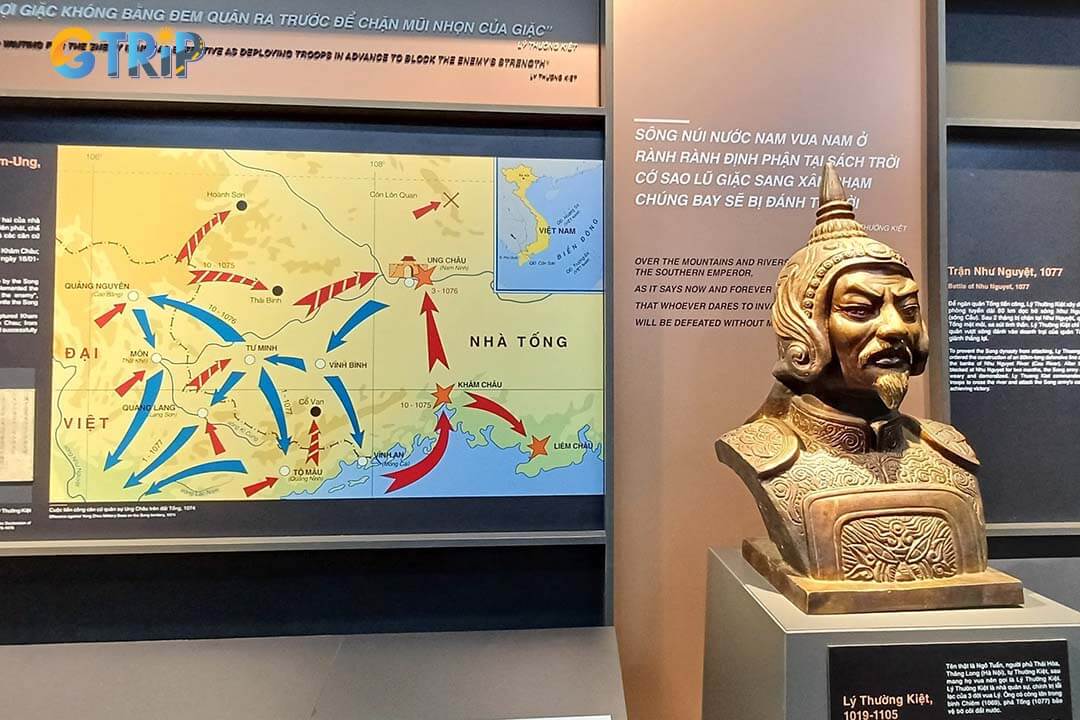
This section explores a millennium of Vietnamese resistance, spotlighting key military innovations and iconic battles
3. Fighting French colonialism and gaining national independence (1858 to 1945)
The museum’s third exhibit focuses on Vietnam’s prolonged struggle against French colonialism, starting with the French attack on Da Nang in 1858. It traces the rise of key resistance movements such as Can Vuong (Aid the King), Dong Du (Eastern Travel), and the Vietnam Nationalist Party. Artifacts from figures like Phan Boi Chau and Ho Chi Minh contrast Vietnamese resilience with the advanced weaponry of the French colonial military. Personal belongings, weapons, and documents illustrate the determination and sacrifice of the Vietnamese people.
4. Resistance against French invasion (1945 to 1954)
This section explores the First Indochina War, a key chapter in Vietnam’s struggle for independence. It starts with artifacts from the August Revolution of 1945 and traces the major campaigns leading up to the 1954 victory over French forces. The Battle of Dien Bien Phu is a central focus, featuring weapons, tactical maps, and personal items from General Vo Nguyen Giap. The exhibit shows how lightly equipped Vietnamese troops used creative tactics to defeat the better-armed French forces.

This section traces the First Indochina War, highlighting Vietnam’s path to independence and the pivotal Dien Bien Phu victory
5. The resistance war against the U.S. (1954 to 1975)
Perhaps the most extensive section of the museum, this exhibit focuses on the Vietnam War, known in Vietnam as the "American War". The gallery chronicles the gradual escalation of the conflict and the key military campaigns that defined the war. Captured American aircraft, tanks, and artillery are on display, offering a tangible reminder of the industrial scale of the war. Key moments like the Tet Offensive and “Dien Bien Phu in the Air” are highlighted with multimedia and artifacts, including downed B-52s and anti-aircraft weapons. The section highlights the resourcefulness and determination of the Vietnamese military in the face of overwhelming American firepower.
6. Nation-building and defence from 1976 to the present
The final exhibit focuses on the post-war era, examining Vietnam’s military evolution during its reconstruction and modernization phases. This section showcases the challenges faced in the immediate aftermath of the war, including the clearance of unexploded ordnance and rebuilding efforts. The exhibit shows Vietnam’s growing military strength through advances in weapons, gear, and modernization. The section also highlights Vietnam’s peacekeeping and regional security efforts, including the South China Sea.
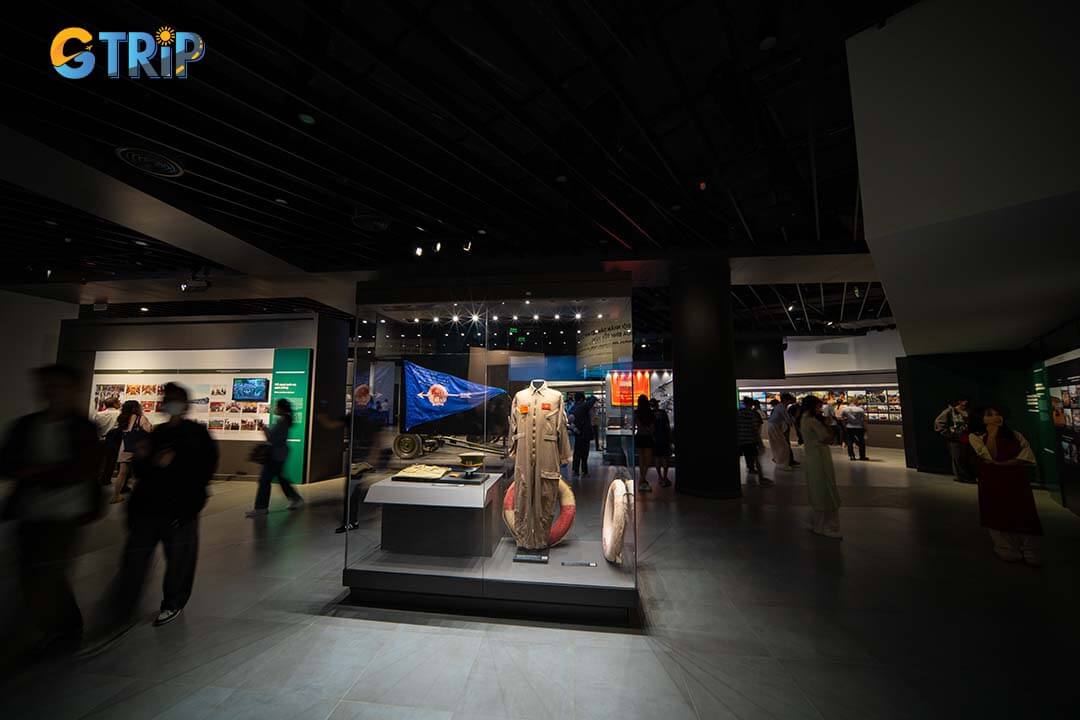
The final exhibit highlights Vietnam’s post-war military growth, reconstruction efforts, and evolving role in peacekeeping and regional security
These six thematic exhibits offer a comprehensive view of Vietnam’s military history. They blend artifacts, multimedia presentations, and interactive displays to create an immersive experience that is both informative and engaging for visitors.
Educational programs and interactive learning
The Vietnam Military History Museum stands out for its extensive collection of artifacts and for its commitment to dynamic education. The museum goes beyond displays with programs that turn history into engaging, hands-on experiences. These programs make military history accessible and engaging for all ages, blending academic depth with interactive learning.
Engaging educational programs
The Vietnam Military History Museum has transformed historical education through innovative programming that goes beyond passive observation. These programs connect visitors to Vietnam's military past through multisensory experiences that make history tangible.
The flagship program, "Echoes of Resistance", offers a three-hour immersive journey through Vietnam's struggle for independence. Visitors explore historical artifacts, including weaponry and soldiers' items, with expert guidance. This tactile connection brings history to life in ways traditional textbooks cannot. As one educator said, "The program turned abstract concepts into concrete realities for our students."
For those seeking deeper tactical understanding, the "Battle Strategy Workshops" provide insights into Vietnam's military thinking. Using interactive maps, terrain models, and digital simulations, participants analyze battle plans and learn how Vietnamese forces developed innovative strategies. These 90-minute workshops accommodate groups of 8-15 and require booking.
The "Veteran Dialogue Series" offers a unique opportunity for military history enthusiasts to hear firsthand accounts from former soldiers. These intimate sessions, limited to 20 people, create emotional connections and offer personal perspectives on historical events. A spokesperson noted, "These dialogues bring emotional depth and context to the artifacts on display".
Technology-enhanced learning experiences
The Vietnam Military History Museum has embraced cutting-edge technology to create memorable educational experiences that resonate with tech-savvy visitors. These technological innovations help contextualize artifacts and create deeper emotional connections to historical events.
The museum's augmented reality (AR) battle simulation stands as its most impressive technological achievement. Using specialized tablets available for rent, you can point their devices at designated areas to witness key battles unfold before their eyes. The AR experience recreates key events, such as the Battle of Dien Bien Phu and Tet Offensive, highlighting troop movements, terrain, and strategies. The system includes multiple language options (Vietnamese, English, French, Chinese, Korean, and Japanese), making it accessible to international visitors.
Virtual reality experiences take immersion to another level through the "Soldier's Journey" installation. This powerful 15-minute VR session places participants in the role of ordinary soldiers during different periods of Vietnam's military history. Users experience the challenging conditions, limited resources, and strategic innovations that characterized Vietnamese resistance efforts.
Educational technology highlights:
- AR battle simulations with multilingual support
- VR "Soldier's Journey" historical immersion points
- Interactive touch-screen timelines tracing military development
- 3D printing demonstrations of historical weapons and equipment
- Drone footage showing historical battlefields in contemporary settings
- Mobile app with audio guides and supplementary content
The museum also hosts regular "Tech & Tactics" workshops that demonstrate how technology has transformed warfare throughout Vietnam's history. These sessions compare historical and modern military tech, highlighting the ingenuity that helped Vietnamese forces overcome disadvantages. The workshops feature working models of improvised weapons, tunneling techniques, and communication systems that proved decisive in various conflicts.
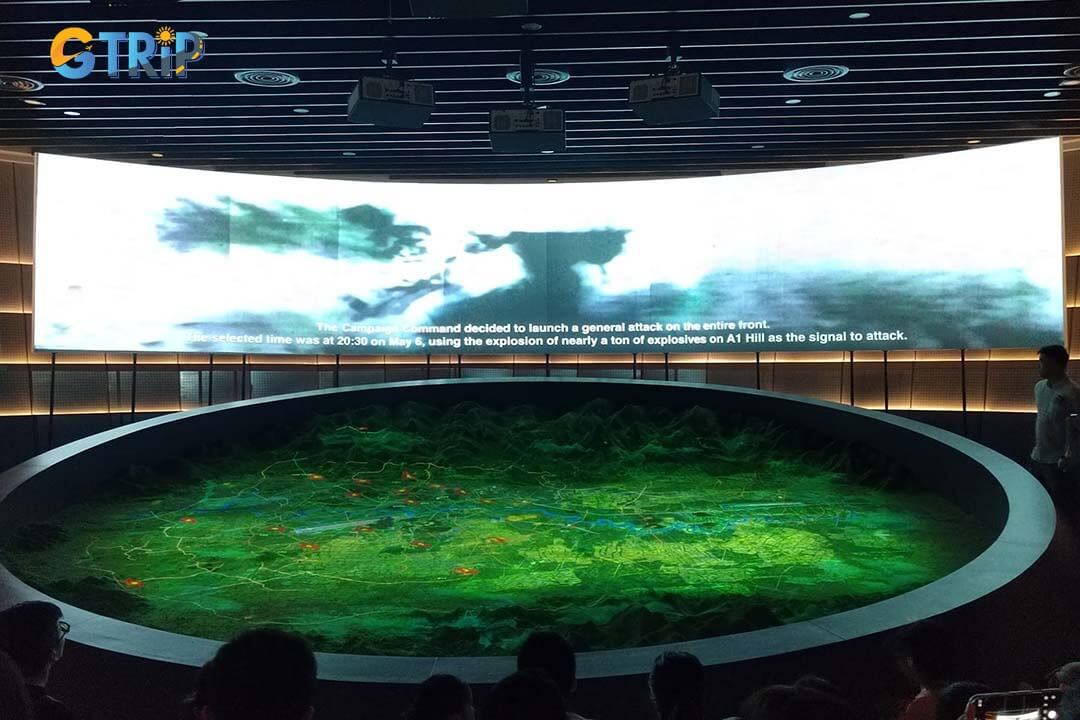
This section showcases the museum’s use of advanced technology, to bring Vietnam’s military history to life for modern, tech-savvy audiences
Research and educational resources at the Vietnam Military History Museum
The Vietnam Military History Museum is a vital resource hub for researchers, historians, and academic institutions seeking detailed knowledge of Vietnam's military history. The museum offers a comprehensive digital archive containing documents, photos, maps, and recorded interviews, available to qualified researchers upon application. The archive includes rare sources like military communications, tactical manuals, and personal letters.
For university students, the museum runs specialized research programs, providing access to non-display collections and expert consultations. These programs typically last 1-2 weeks during academic breaks and include training in military history research methods. The museum collaborates with several Vietnamese universities and international military history institutions.
Research resources
- Digital archive: Documents, photographs, maps (Available in Vietnamese and partially in English)
- Oral history collection: Veteran interviews, witness accounts (Transcripts available)
- Military technology library: Technical manuals, equipment specs (Includes comparative analysis)
- Tactical documentation: Battle plans, strategic assessments (Some materials classified)
- Personal artifact collection: Letters, diaries, personal effects (Handled with protective equipment)
Other museums in Hanoi
The Vietnam Military History Museum offers deep insights into the country's military past. You seeking a broader understanding of Vietnamese history and culture may want to explore other museums in Hanoi. These museums provide additional context and a broader view of the nation’s rich heritage.
Hanoi Museum
The Hanoi Museum, an architectural masterpiece located in the Nam Tu Liem District, offers an extensive collection that spans over 1,000 years of Hanoi’s history. It offers insights into the city’s cultural, social, and economic evolution through archaeological finds, cultural artifacts, and contemporary artworks. Unlike the Military History Museum, the Hanoi Museum showcases the city’s cultural heritage and growth into a modern metropolis. The museum’s design itself reflects Hanoi's dynamic growth, with innovative exhibits that create an engaging experience for visitors. It’s an essential stop for anyone looking to explore the multifaceted history of Hanoi beyond its military narrative.
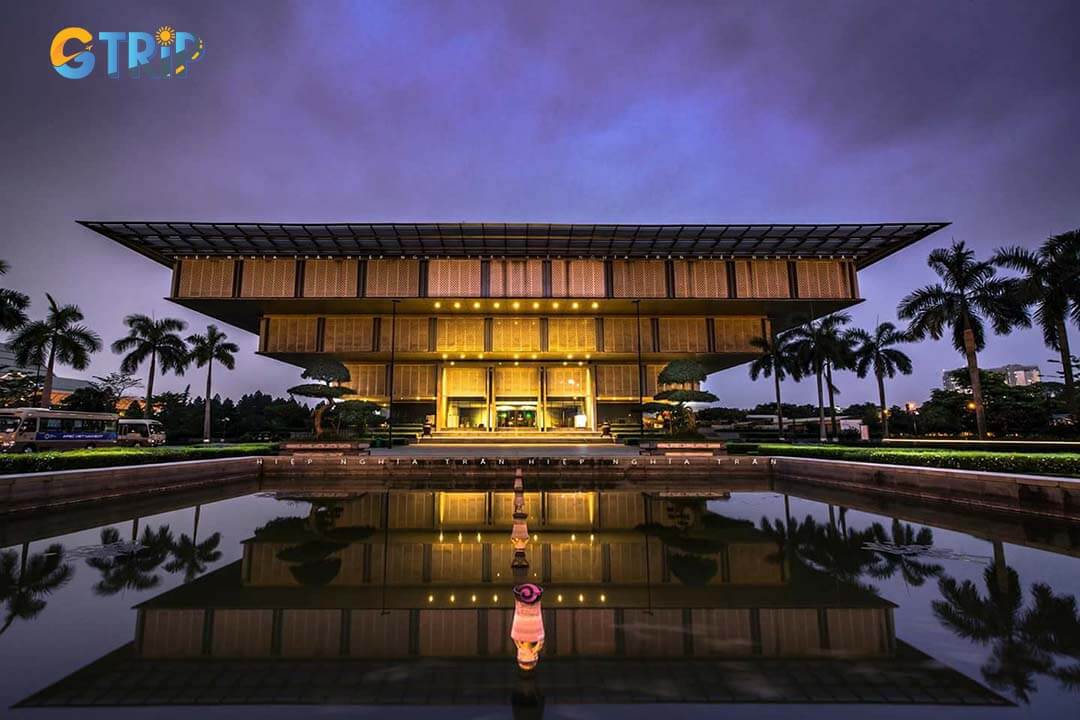
The Hanoi Museum presents over 1,000 years of the capital’s cultural and urban evolution through rich collections and striking modern architecture
Vietnam National Fine Arts Museum
Vietnam National Fine Arts Museum offers a comprehensive look at Vietnam’s artistic development through the ages. The museum’s collection spans ancient art, traditional Vietnamese painting, and modern works, with a notable emphasis on the emotional and cultural impact of war. Many of the artworks reflect the country's historical struggles, including the French colonial period, the Vietnam War, and the post-war era. The museum provides a unique opportunity to view the powerful role of art in conveying the sentiments of conflict, resistance, and resilience. It gives visitors a deeper emotional connection to the military history explored at the nearby Military History Museum. It’s an essential visit for those interested in the intersection of art and history.
Hanoi Police Museum
The Hanoi Police Museum offers a fascinating look at the history of Vietnam's police force and its law enforcement evolution. The museum examines how the police force has evolved through the French colonial period, the struggle for independence, and the Vietnam War. It draws interesting parallels with the military, as both institutions played vital roles in maintaining national security and enforcing resistance. Exhibits include uniforms, equipment, and documents related to the police’s role in Vietnam’s history, along with firsthand accounts and stories from former officers. This lesser-known museum provides a unique perspective on the challenges faced by the Vietnamese police and their cooperation with military operations during periods of conflict.
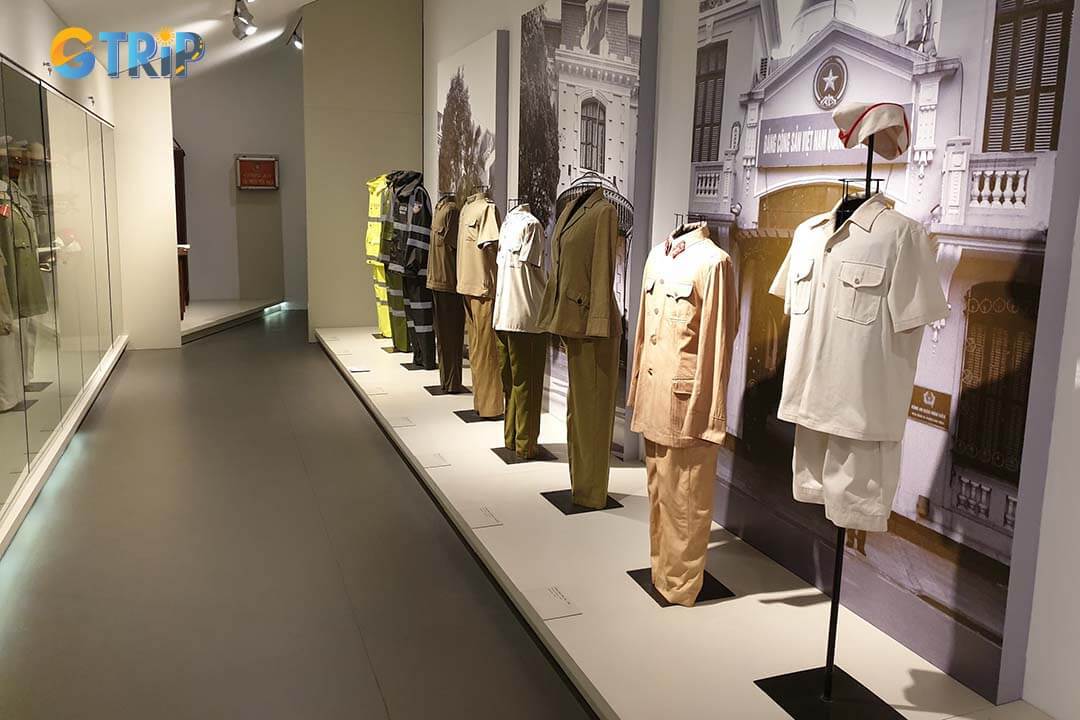
The Hanoi Police Museum offers a unique perspective on Vietnam's internal security, exploring the evolution of the police force through colonial and independence
Vietnam National Museum of History
The Vietnam National Museum of History offers an extensive collection that traces the country's development from prehistoric times through the imperial era and into modern history. The museum provides a deep dive into Vietnam’s rich cultural heritage, covering a wide range of topics including ancient civilizations, dynastic history, and the country’s struggle for independence. The museum offers crucial context for understanding the military conflicts displayed at the nearby Military History Museum. It also presents the broader narrative of Vietnam’s cultural, political, and social evolution, which helps visitors connect the country’s past to its present. The museum’s diverse exhibits, including artifacts from both local and foreign cultures, provide a comprehensive understanding of Vietnam’s historical journey.
Hoa Lo Prison
The Hoa Lo Prison Museum, also known as the “Hanoi Hilton,” provides a sobering insight into the harsh conditions faced by political prisoners during French colonial rule. It also details the experiences of American POWs during the Vietnam War. The prison was originally built by the French in the late 19th century to house political dissidents, and later, it was used by North Vietnam to detain American soldiers during the war. The museum’s exhibits include photographs, personal artifacts, and recreations of prison cells, providing visitors with a powerful look at the resilience of those held within. By exploring the stories of those imprisoned here, visitors gain an alternative view of Vietnam’s resistance efforts and its struggle for independence. It offers a complementary perspective to the military history covered in the Military History Museum.

The Hoa Lo Prison offers a poignant look at the harsh conditions faced by political prisoners under French rule and American POWs during the Vietnam War
For visitors with limited time, combining the Vietnam Military History Museum with the Vietnam National Museum of History offers a comprehensive historical overview. Those interested in artistic and cultural dimensions might pair it with the Fine Arts Museum. This combination provides a more rounded perspective on how conflict shaped Vietnamese society.
Exploring the Vietnam Military History Museum opens a door into the resilient spirit and complex history that has shaped Vietnam’s identity. As you wander through its exhibits, you gain more than just insights into military strategies or historic battles, you connect with the courage and tenacity of a nation. This experience enriches your understanding of Vietnam beyond its stunning landscapes and vibrant culture, offering profound perspectives on its journey through strife to peace.
If you're a history enthusiast or simply curious about Vietnam's path to sovereignty, this visit adds layers to your travel narrative, making it both meaningful and memorable. Let these stories inspire your next journey, leading you to more unique experiences with GTrip - Vietnam Travel Agency across Southeast Asia.

